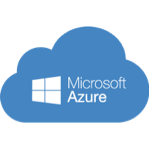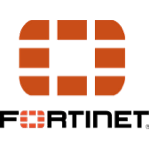-

How Much it ll cost to build an app like
- Cost to develop an Uber Tow Truck App
- Cost to develop a Pest Control App
- Cost To Develop a Handyman App Like Uber
- Cost To Develop a Doctor Appointment Booking App
- Cost To Develop An App Like MoodBites
- Cost To Develop An App Like SkipTheDishes
- Cost To Develop An App Like Q Chat
- Cost To Develop An App Like TickTick
- Cost To Develop An App Like ContractBook
- Cost To Develop An App Like Utter
-

How Much it ll cost to build an app like
- Cost to develop a Video Editing Mobile App like Magisto
- Cost to develop a Live Video Streaming App like Twitch
- Cost to develop an app like Home Workout- No equipment
- Cost to develop a Sports News app like theScore
- Cost to develop an Application like Reddit
- Cost to develop a Sports News app like theScore
- Cost to develop an E-learning platform like Udemy
- Cost to develop an On Demand Doctor App like Heal App

Best Cloud Computing Service Provider for Enterprise SaaS: Top Solutions in 2025
When discussing the topic of what the best cloud computing service provider is for commercial businesses, the term ‘SaaS’ often appears. SaaS, short for Software as a Service, refers to a cloud-based software distribution model where a service provider hosts applications and makes them accessible to clients over the internet. In today’s digital economy, enterprise SaaS is rapidly becoming the default software delivery model for everything from project management and customer service to finance and data analytics. As cloud adoption continues to skyrocket, more organizations are actively seeking the best cloud computing service provider to help scale operations, improve flexibility, and reduce costs. In this article, we’ll explore what SaaS means in an enterprise setting, how it evolved, how to choose between SaaS and on-premise solutions, and the advantages it brings to modern businesses.
A Brief History of SaaS and Cloud Computing
The origins of SaaS and cloud computing go back much further than many realize. In 1961, renowned computer scientist and Turing Award winner John McCarthy predicted that “computers may someday be organized as a public utility.” This idea eventually materialized into the cloud services we know today.
However, the real turning point came in the late 1990s when Salesforce pioneered enterprise SaaS by delivering customer relationship management (CRM) software via the cloud. Initially met with skepticism, this model eventually proved to be scalable, cost-effective, and far more flexible than traditional software installations.
Since then, top cloud computing services have become mainstream, and today, businesses of all sizes use SaaS for mission-critical operations. It is estimated that more than 85% of all business applications are SaaS-based, as of 2025. Whether you’re running HR, accounting, sales, or marketing functions, there’s a SaaS application tailored for your needs.
Enterprise SaaS Meaning: What Makes It Different?
So, what is enterprise SaaS exactly? Enterprise SaaS refers to software solutions designed specifically for large-scale organizations with complex, multi-departmental needs. Unlike small-business tools, enterprise SaaS platforms emphasize scalability, integrations, security, and advanced support services.
These platforms often power core functions like enterprise resource planning (ERP), supply chain logistics, payroll management, content collaboration, and customer support. The best part? They do it all through the cloud, eliminating the need for heavy on-site infrastructure.
How to Choose a Cloud Provider: SaaS vs. On-Premise Software
When deciding between on-premise software and SaaS, businesses must weigh flexibility, customization, cost, and control. Ask yourself the following:
-
How complex is your software environment?
-
Do you require heavy customization?
-
Is your industry highly specialized?
-
What’s your budget?
If you need rapid deployment, automatic updates, remote accessibility, and predictable monthly costs, SaaS is often the superior option. It allows businesses to shift from capital expenditures to operating expenditures and scale up or down as needed.
However, some enterprises still prefer on-premise solutions for maximum control over data and software environments. In either case, the decision often hinges on the level of customization needed and the internal resources available for maintenance.
Is SaaS Customizable for Enterprises?
Absolutely. One of the major misconceptions about SaaS is that it offers limited flexibility. In truth, most enterprise SaaS companies offer robust customization tools.
These include configurable dashboards, modular features that can be toggled on or off, and APIs that enable third-party integrations. Many SaaS platforms allow you to modify user interfaces and even workflows to match your internal processes.
While on-premise software might offer deeper backend control, modern SaaS solutions have significantly closed that gap, delivering flexibility, agility, and faster updates with minimal disruption.
Data Security and SaaS: Should You Be Concerned?
For any enterprise SaaS company, data security is non-negotiable. And for good reason, companies are storing sensitive financial records, customer information, and internal communications in the cloud.
Contrary to what some may think, cloud-based SaaS platforms are often more secure than on-premise alternatives. Why?
-
SaaS vendors invest heavily in encryption, multi-factor authentication, and intrusion detection.
-
They frequently back up data across multiple geographies.
-
They maintain 24/7 monitoring teams to prevent and respond to breaches.
It’s important to note that 95% of security breaches occur due to human error, not technology flaws. Weak passwords, phishing, and internal mishandling of credentials are the real threats – issues that top 10 cloud computing service providers actively help mitigate through user training and advanced security protocols.
SaaS vs. Operating System Limitations
One of the most common misconceptions about enterprise SaaS is that it requires a flawless, always-on internet connection to function properly. While it’s true that internet connectivity is fundamental to SaaS operations, today’s top platforms have evolved significantly.
Most cloud-based software providers have implemented offline access features and intelligent local caching. These capabilities allow users to continue working even when temporarily disconnected, automatically syncing data and updates once the connection is restored. This hybrid functionality ensures uninterrupted productivity and minimizes data loss risks.
Another advantage of SaaS is its inherent cross-platform compatibility. Unlike traditional software that may require installation on a specific operating system, SaaS runs directly through web browsers.
This browser-based architecture allows SaaS applications to function seamlessly across all major operating systems, including Android, iOS, Windows, macOS, and Linux. Whether your team members use a smartphone, tablet, desktop, or even a Chromebook, they can access mission-critical tools from virtually anywhere, without the need for complicated installations or OS-specific versions.
Moreover, SaaS platforms are designed with device independence in mind. This means enterprises no longer need to issue standardized hardware or rely on strict IT provisioning just to ensure compatibility. Instead, teams can adopt a bring-your-own-device (BYOD) policy with confidence, knowing that their cloud computing service provider supports universal access.
In contrast, on-premise systems often come with limitations tied to hardware, local infrastructure, and installed environments. These systems can be vulnerable to unexpected disruptions such as power outages, hardware failures, or internal network issues – any of which can render critical applications unusable for extended periods.
Additionally, maintaining compatibility across operating systems in an on-premise environment often requires dedicated IT resources, patches, and testing protocols, which can drive up both time and costs.
Ultimately, SaaS solutions offer greater operational resilience, enabling businesses to remain agile, responsive, and connected, even in less-than-ideal conditions. For enterprises seeking a flexible, scalable, and reliable option across diverse environments, SaaS stands out as a future-proof alternative to traditional, OS-dependent systems.
Advantages of Enterprise SaaS Solutions
Choosing a cloud-based enterprise SaaS solution offers a range of advantages.
1. Global Accessibility
All applications delivered via SaaS are available through the internet. Employees can access the software from anywhere in the world, enabling hybrid work and remote collaboration.
2. Device Compatibility
SaaS works seamlessly across platforms – mobile, desktop, tablet – and supports every major operating system and browser. No need for specific hardware or software environments.
3. Easy Scalability
SaaS platforms are built to scale. Whether you’re onboarding 10 users or 10,000, most providers allow for seamless expansion (or contraction) based on your operational demands.
4. Automatic Updates
Instead of manually upgrading software, SaaS vendors roll out updates automatically, ensuring you always have the latest features and security patches without added work or cost.
5. Cost-Efficiency
Through “pay-as-you-go” pricing models, businesses can reduce upfront licensing costs and spread expenses over time. SaaS solutions cost approximately 62% fewer total solution costs than on-premise CPM solutions. It’s one of the most budget-friendly ways to adopt advanced technology.
6. Maintenance-Free IT
SaaS eliminates the need for complex hardware and reduces your reliance on large IT teams. Vendors handle uptime, bug fixes, server maintenance, and upgrades.
7. Built-in Data Backup
Most SaaS services offer auto-backup and secure export features. This gives enterprises full control over their data while reducing the risk of loss from outages or system failures.
Top 5 Cloud Service Providers for Enterprise SaaS
If you’re wondering how to choose a cloud provider, start by evaluating reliability, features, customer support, pricing, and security. Here are the top 5 cloud service providers that consistently rank among the best:
-
Amazon Web Services (AWS) – Known for unmatched scalability and a massive ecosystem of integrations.
-
Microsoft Azure – Especially strong in hybrid cloud and enterprise productivity integration.
-
Google Cloud Platform (GCP) – Offers powerful analytics and machine learning tools.
-
IBM Cloud – Ideal for enterprises with specific compliance needs.
-
Oracle Cloud – Excellent for enterprises looking for strong database and financial application support.
These players regularly appear on “top 10 cloud computing service” lists and support a majority of the world’s most demanding SaaS applications.
Enterprise Software vs. SaaS: What’s the Difference?
While enterprise software typically refers to any large-scale application for business operations, SaaS is a delivery model – how that software is accessed and managed.
Traditional enterprise software is often hosted on-premise, requiring hardware, licensing, and internal support.
Enterprise SaaS, on the other hand, provides the same functionality via the cloud, reducing physical infrastructure, simplifying updates, and improving accessibility.
On average, organizations deploy 112 different SaaS tools and large enterprises over 10,000 employees use around 447.
Is SaaS with Lets Nurture the Right Choice for Your Enterprise?
There’s no one-size-fits-all solution in today’s tech landscape, but for many organizations, enterprise SaaS has emerged as the most scalable, secure, and cost-effective option.
From streamlining operations to enhancing collaboration across global teams, SaaS empowers businesses to move faster, reduce overhead, and future-proof their technology investments. It’s a flexible model that adapts to your growth without the burden of on-premise infrastructure or escalating IT maintenance.
If you’re evaluating your options, choosing the best cloud computing service provider is crucial to getting the most out of your SaaS investment. That’s where Lets Nurture comes in.
As a leading technology partner, Lets Nurture specializes in delivering tailored SaaS development, mobile app solutions, and cloud integration services for enterprises across industries. Whether you’re a growing startup or an established company looking to modernize, our team works closely with you to build secure, scalable platforms that align with your goals.
In a competitive digital era where speed, reliability, and continuous innovation are non-negotiable, the right SaaS strategy can give you a strategic edge. From rapid deployment and lower upfront costs to seamless updates and global accessibility, the advantages are clear.
Ready to explore what SaaS can do for your business? Contact the team at Lets Nurture today to discover cloud-powered solutions designed to scale with you. Let us help you turn your vision into a reliable, high-performance reality.

Author
Our Partners




WhatsApp us





